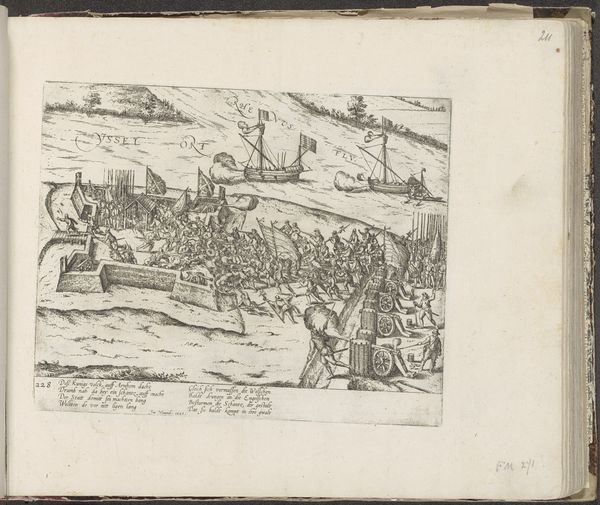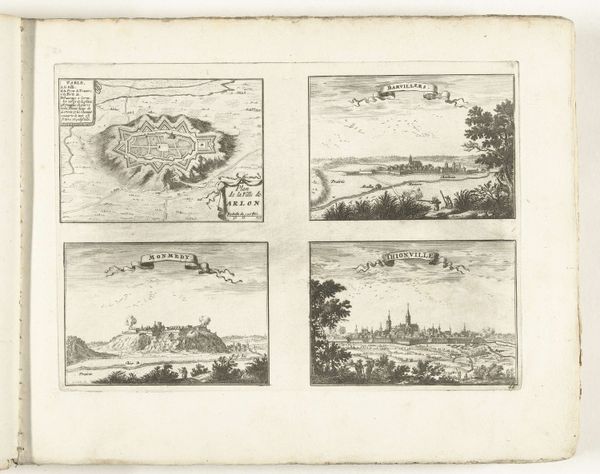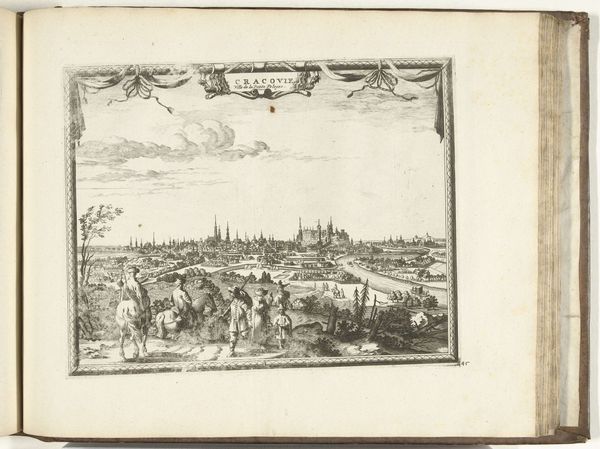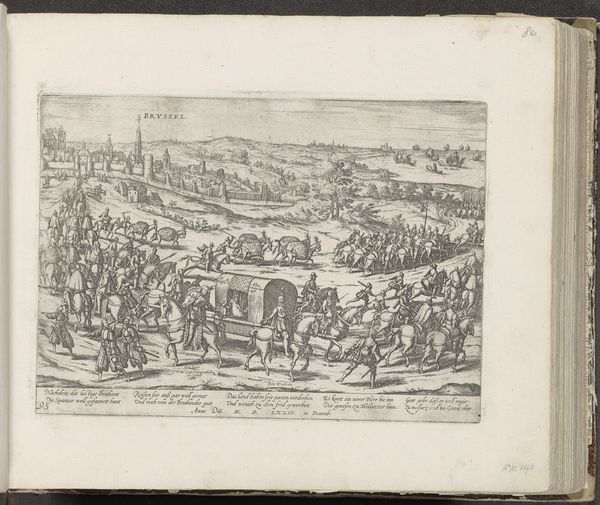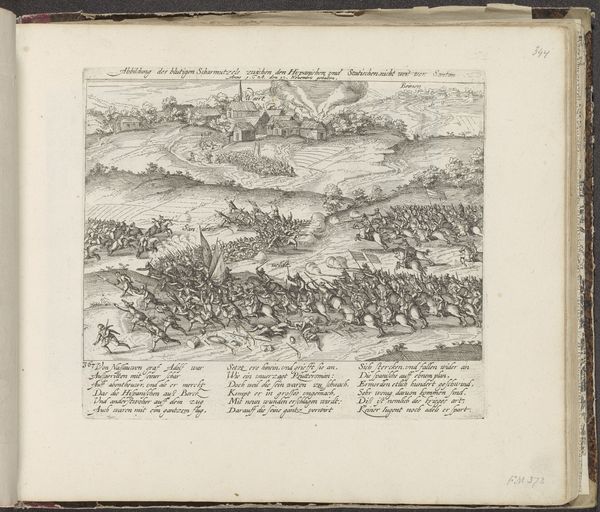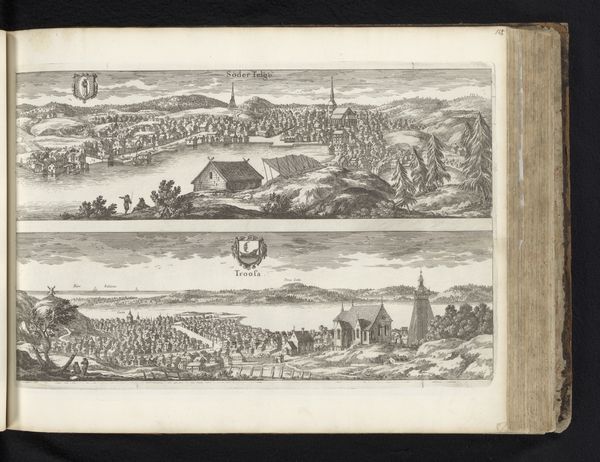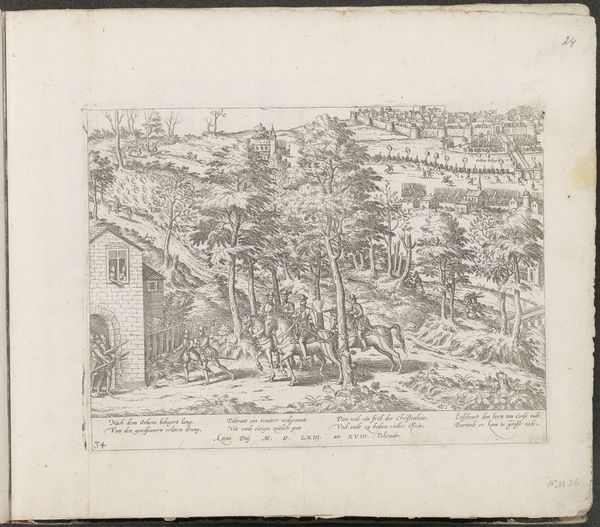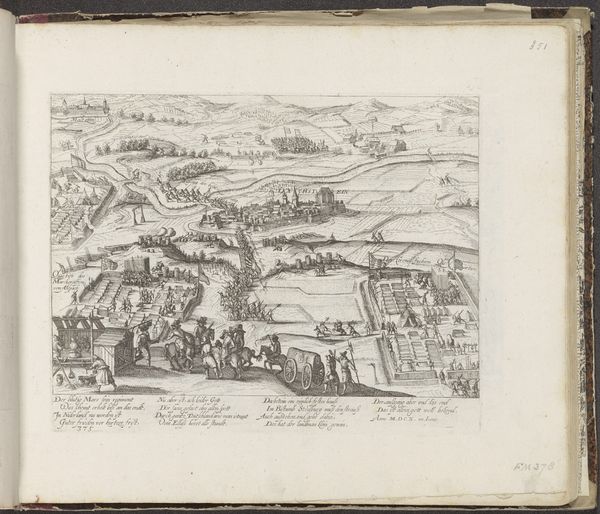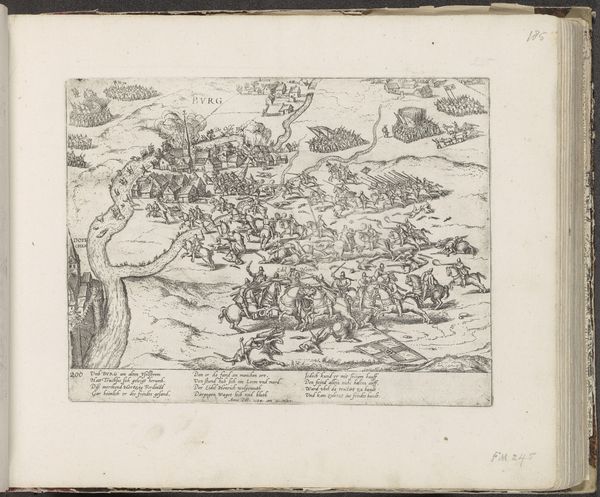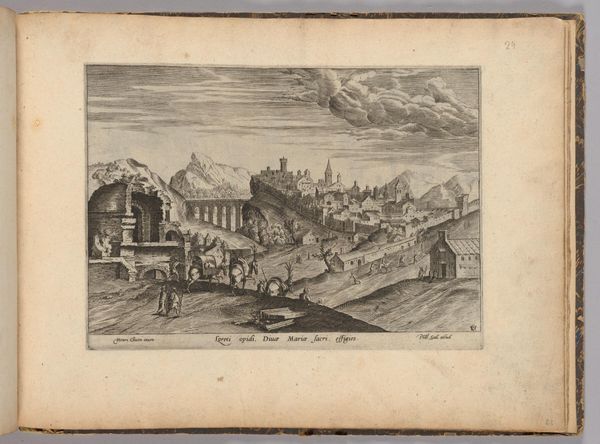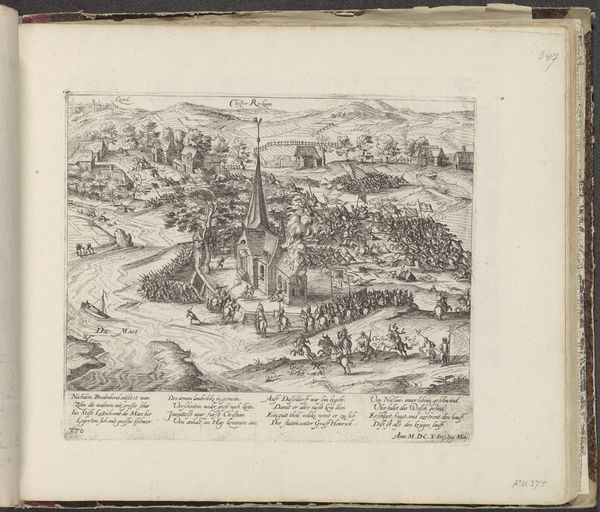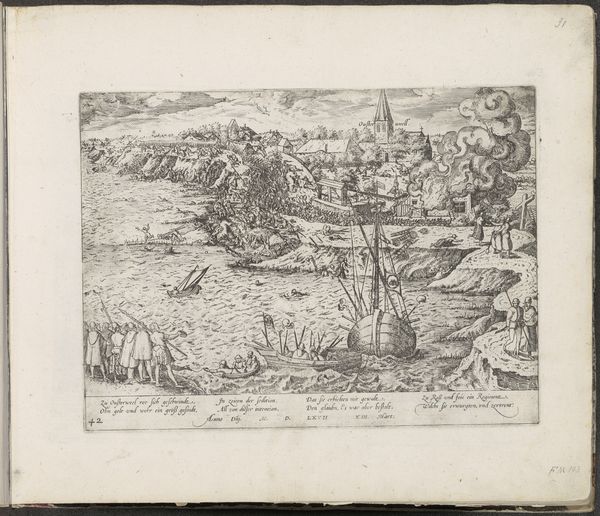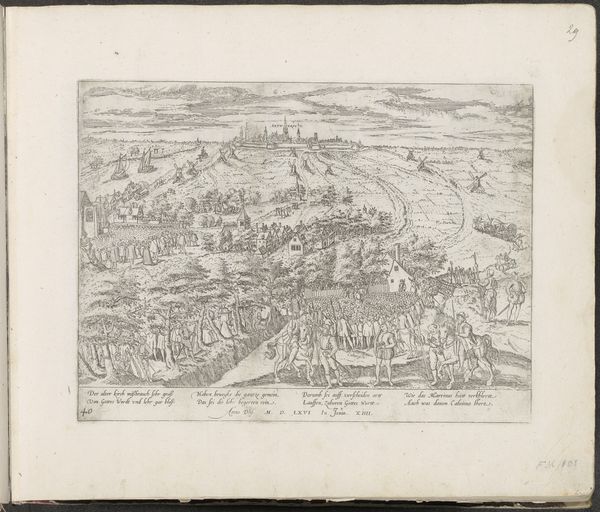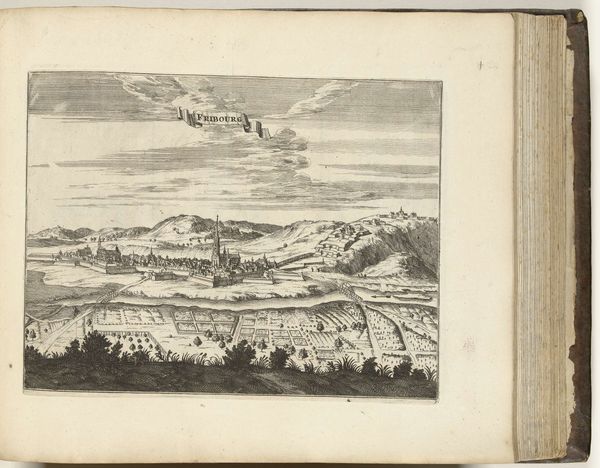
drawing, print, ink, engraving
#
drawing
#
baroque
# print
#
landscape
#
ink
#
cityscape
#
engraving
Dimensions: height 237 mm, width 359 mm
Copyright: Rijks Museum: Open Domain
This page of views of Waradiin, Vác, Temesvár and Novigrad was made in 1726 by an anonymous artist, using the technique of etching. It is an early example of mechanical reproduction, a process that democratized images by allowing them to be produced quickly and in large numbers. Each of the etched views offer a detailed depiction of each city, emphasizing the architecture, fortifications, and surrounding landscapes. Note the fine lines and intricate details achieved through the etching process, where acid is used to bite into the metal plate, creating grooves that hold ink. The production of these prints was closely tied to the expansion of knowledge and information, as they allowed for the dissemination of geographical and architectural information to a wider audience. Consider how the material and technique of etching, with its reliance on skilled labor and mechanical reproduction, reflect the burgeoning forces of capitalism and the increasing demand for visual information in the 18th century. It really makes you wonder about the role of craft in shaping our understanding of history and culture, and how modes of production can imbue an artwork with social and cultural significance.
Comments
No comments
Be the first to comment and join the conversation on the ultimate creative platform.
